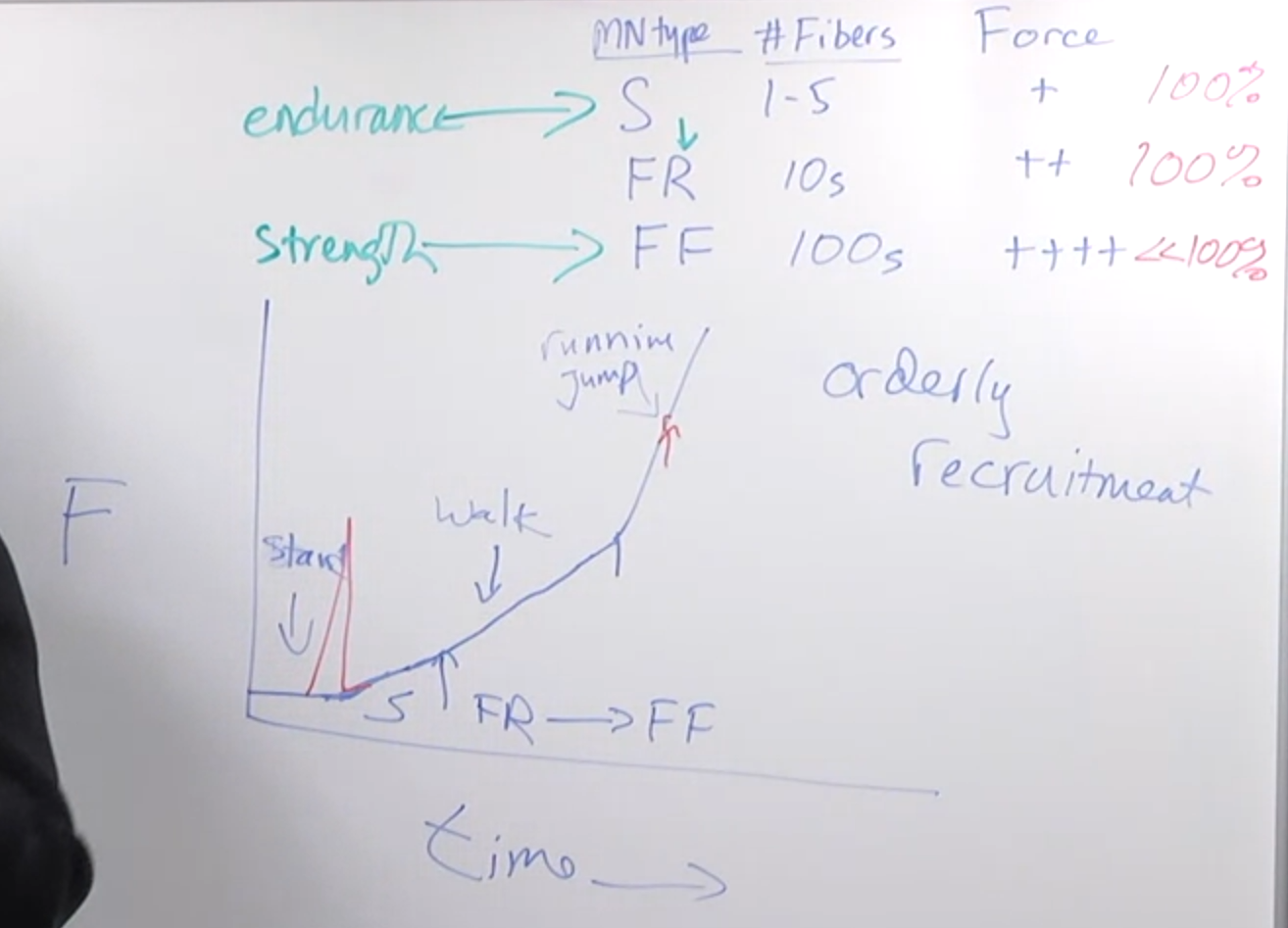
Orderly Recruitment of Motor Neurons
This lecture explains the concept of orderly recruitment, a crucial process for smooth and efficient muscle movement.
Key Points:
- Different motor neuron types activate depending on the desired force output.
- Slow motor neurons (innervating few muscle fibers) are activated first for low-force movements like standing.
- As force requirement increases, fast fatigue-resistant motor neurons (innervating more muscle fibers) are recruited.
- Finally, for high-force activities like jumping, fast fatigable motor neurons (innervating many muscle fibers) are activated.
Benefits of Orderly Recruitment:
- Gradual increase in force for smooth movements.
- Prevents jerky movements that would occur with random motor neuron activation.
- Allows for efficient use of energy by engaging slow fibers first.
Impact of Exercise:
- Disuse of fast fatigable fibers due to a sedentary lifestyle makes them harder to recruit.
- Strength training can improve recruitment of fast fatigable fibers, even after a single workout.
- This improvement in recruitment can last for weeks.
Consequences of Motor Unit Loss:
- Loss of slow motor units: Reduced endurance.
- Loss of fast fatigable motor units: Decreased strength.
Future Directions:
- Research is ongoing to explore if muscle fibers can be converted from slow to fast type to restore strength in diseases involving motor neuron loss.
Overall, orderly recruitment is a vital mechanism for controlled and efficient muscle movement. Exercise can enhance fast fatigable fiber recruitment, while motor unit loss can lead to specific deficits in strength or endurance.